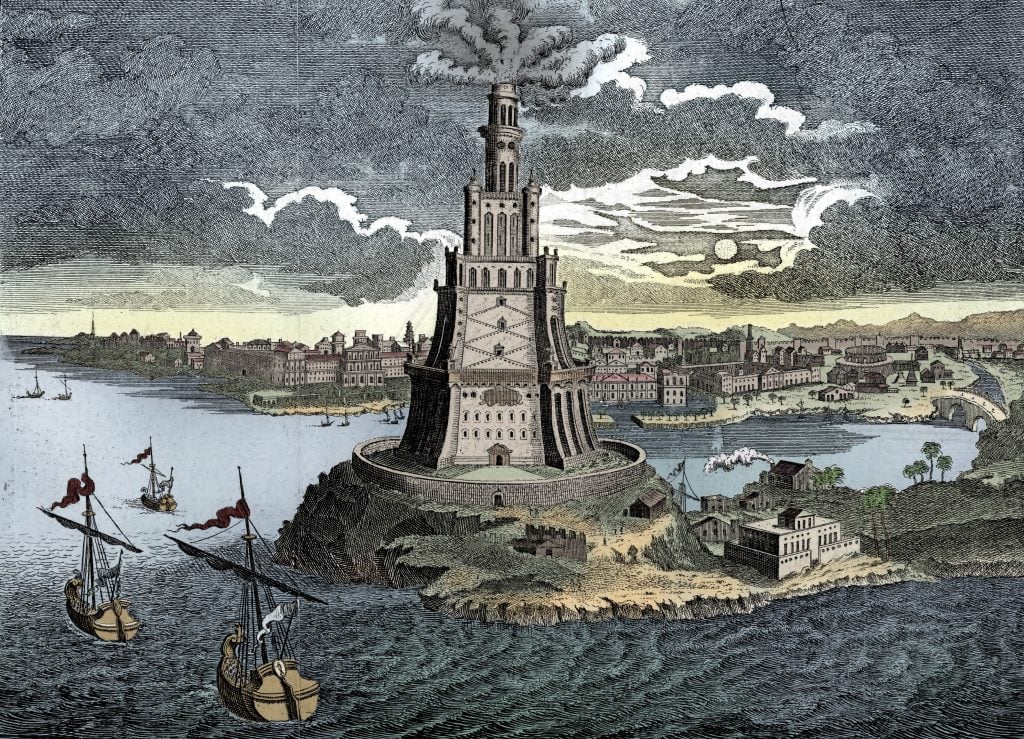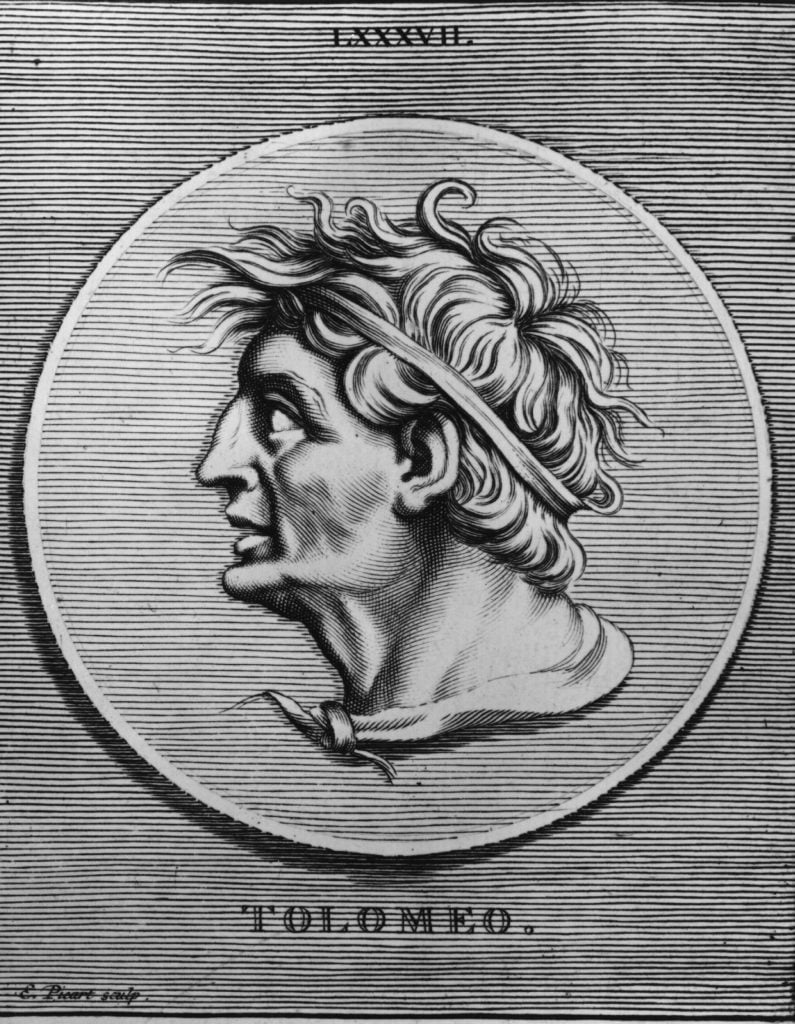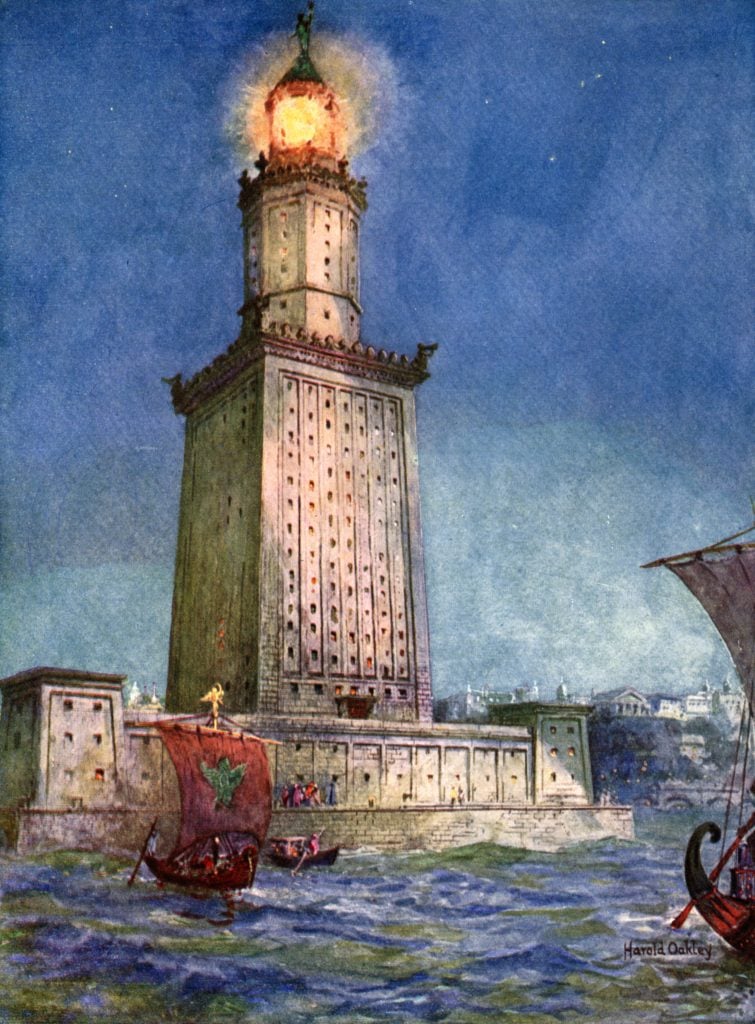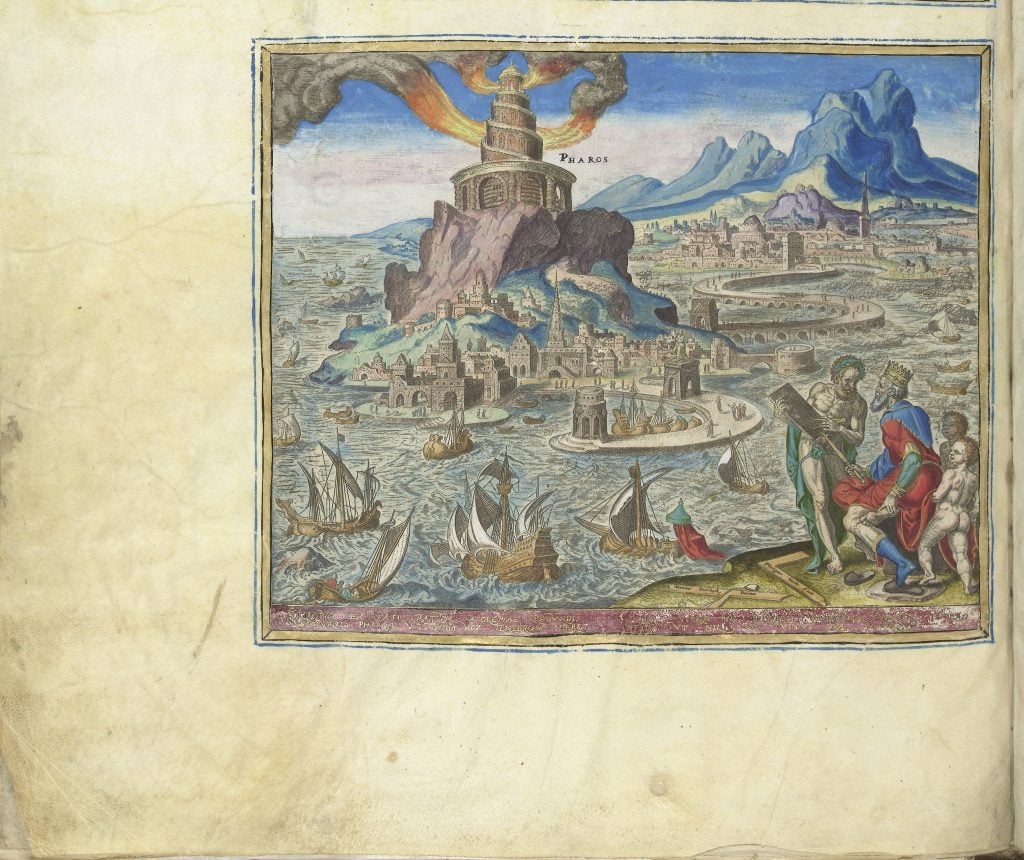Archaeology & History
How Egypt’s Epic Lighthouse Outshone Every Other Ancient Wonder
The structure represented Ptolemy I's loft vision for the capital of Alexandria.

When the Lighthouse of Alexandria in Egypt was completed in the 3rd century B.C.E., most wouldn’t have been able to glimpse the peak of the gargantuan tower, but all could see its light.
The structure was commissioned by Ptolemy I some years after he ascended the Alexandrian throne in 305 B.C.E. He was taking over the reins from celebrated military leader Alexander the Great, who lent the city its name, but the new king rose to meet the moment. Under his rule, the capital flourished: he founded its celebrated library, commenced a record of Egyptian history, and established a thriving trading hub that connected Egypt to the Mediterranean world.
Merchants across the region swarmed to the city, drawn by its strategic position along the Nile Delta and assured by Ptolemy’s protection of sea routes. They also couldn’t have missed the Alexandrian port for the world, illuminated as it was by the king’s lighthouse—built to guide vessels into the city, while symbolizing his lofty vision for his capital.

Engraving of Ptolemy I, king of Egypt (ca. 279 B.C.E.). Photo: Hulton Archive/Getty Images.
The lighthouse was erected on the islet of Pharos, at the entry to the Alexandrian harbor, its apex reaching at least 330 feet into the sky. Constructed of light-colored limestone and granite, the structure was white to enhance its visibility, with three tiers—a square base, then an octagonal body, then a cylindrical section—tapering to bear up a sculpture of Zeus. Smaller statues of Triton were affixed to the building’s four corners.
The topmost story, its windows facing the seaward, held a mirror to reflect sunlight in the day and an unceasing flame to guide seafarers at night. Fed with burning oil, the fire warned sailors of shallow waters, while indicating the entrance of the Alexandrian harbor. (Earlier sources, though, do not mention such a light; it is likely the structure simply stood as a bright-white landmark in its early days).
The project cost 800 talents (or $3 million today) to construct and was either designed or funded by engineer Sostratus of Cnidus, according to historians Strabo and Pliny the Elder. Sostratus had his name inscribed on the tower, before adding a layer of plaster engraved with Ptolemy’s name—a cunning ploy, according to Lucian of Samosata.
“He knew that, as happened later, letters and plaster would fall off together, and reveal the words: ‘Sostratus Son of Dexiphanes of Cnidus on Behalf of All Mariners to the Saviour Gods,'” the satirist wrote. “He looked not, it appears, to that time, nor to the space of his own little life, but to this time, and to all time, as long as his tower shall stand and his art abide.”

The Lighthouse of Alexandria, from Wonders of the Past, volume II (1933–34). Photo: The Print Collector/Print Collector/Getty Images.
While it was far from the first lighthouse in the ancient world, the Alexandrian tower was certainly its most monumental, becoming one of the city’s key attractions alongside its Great Library and Serapeum Temple. Coins were minted commemorating its construction. Its standing was such that “pharos” would become shorthand for lighthouse.
Ptolemy I did not live to see his lighthouse built. His successor Ptolemy II oversaw its completion 12 years after the first stone was laid. The building would outlast even the Ptolemaic dynasty, standing for more than a millennium until a series of earthquakes in 796 and 950 increasingly weakened its structure. Restorations were undertaken in the 12th century by the Fatimids, who added an Islamic-style dome after the statue of Zeus was struck down.
But by the 14th century (and after yet more seisms), the Lighthouse of Alexandria had all but vanished from historical records. Not that it was entirely forgotten—surviving historical accounts fixed it as one of the Seven Wonders of the Ancient World.

Philip Galle, The Lighthouse at Alexandria, from the series “The Eighth Wonders of the World” (1572). Photo: Fine Art Images/Heritage Images/Getty Images.
What survives of Ptolemy’s famed pharos now lies at the bottom of the Mediterranean Sea. In 1968, a UNESCO expedition identified the ruins of the lighthouse in the ancient port of Alexandria. It took nearly three decades before specialized archaeologists led by Jean-Yves Empereur returned to explore and excavate the site; underwater archaeologist Franck Goddio joined the hunt from the opposite end of the harbor. The seafloor held not just the lighthouse’s remains, but relics of the ancient capital and, it’s believed, Cleopatra’s temple.
“We supposed old Alexandria was destroyed, only to realize that when you walk on the sidewalks, it is just below your feet,” Empereur told the Smithsonian Magazine in 2019.
Over the years, Empereur’s team uncovered upward of 3,300 objects: stone sphinxes, obelisks, and columns that once stood in the city. Most remain underwater, though some have been catalogued and sent to museums in the region. However, a 2015 proposal by the Egypt government, with the support of UNESCO, to erect an underwater museum at the site has not moved ahead.
Even more curious is the number of shipwrecks that have turned up around the Alexandrian port, including three Roman-era vessels, laden with coins, pottery, and sculptures, which were discovered in 2017. Alas, not all ships, it seems, managed to heed the pharos’s beacon.
Sometimes, archaeology gets big. In Huge! we delve deep into the world’s largest, towering, most epic monuments. Who built them? How did they get there? Why so big?





